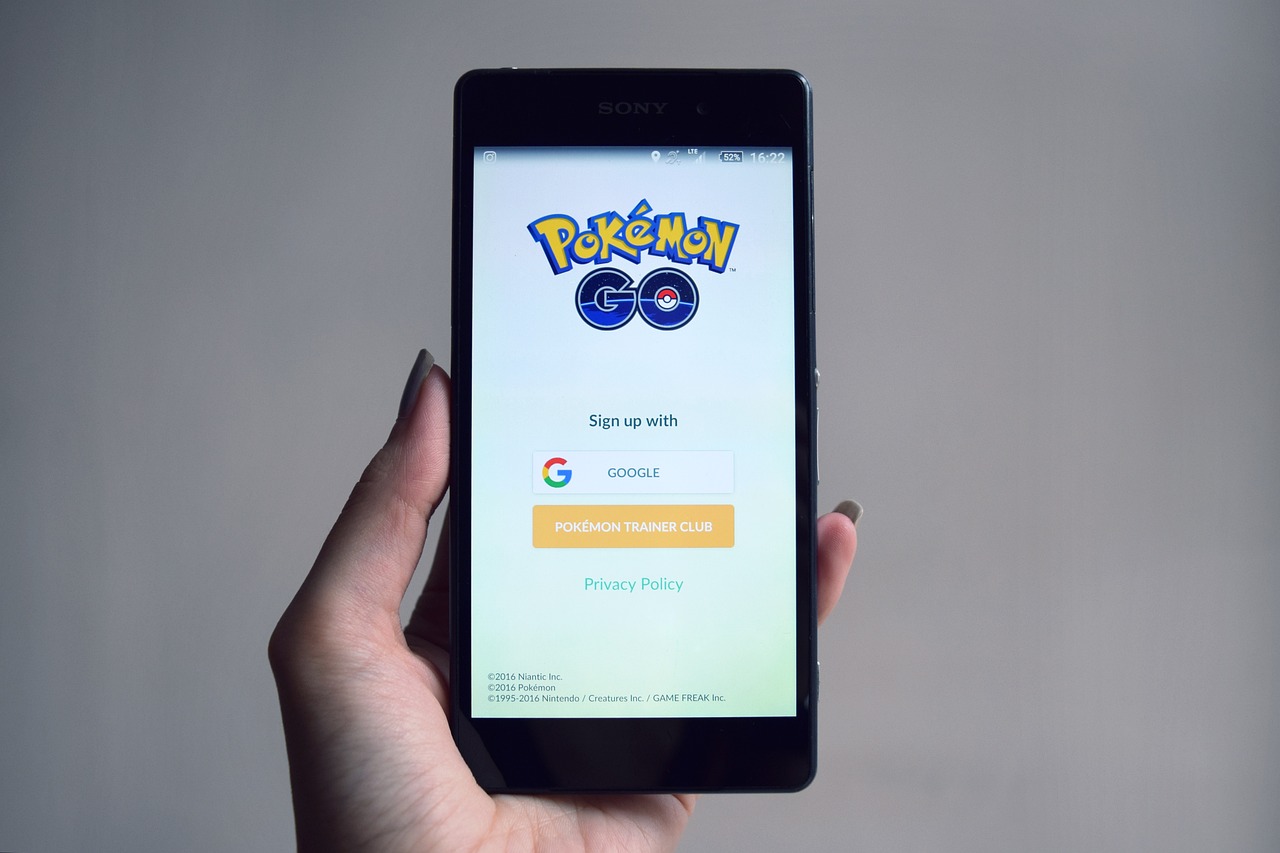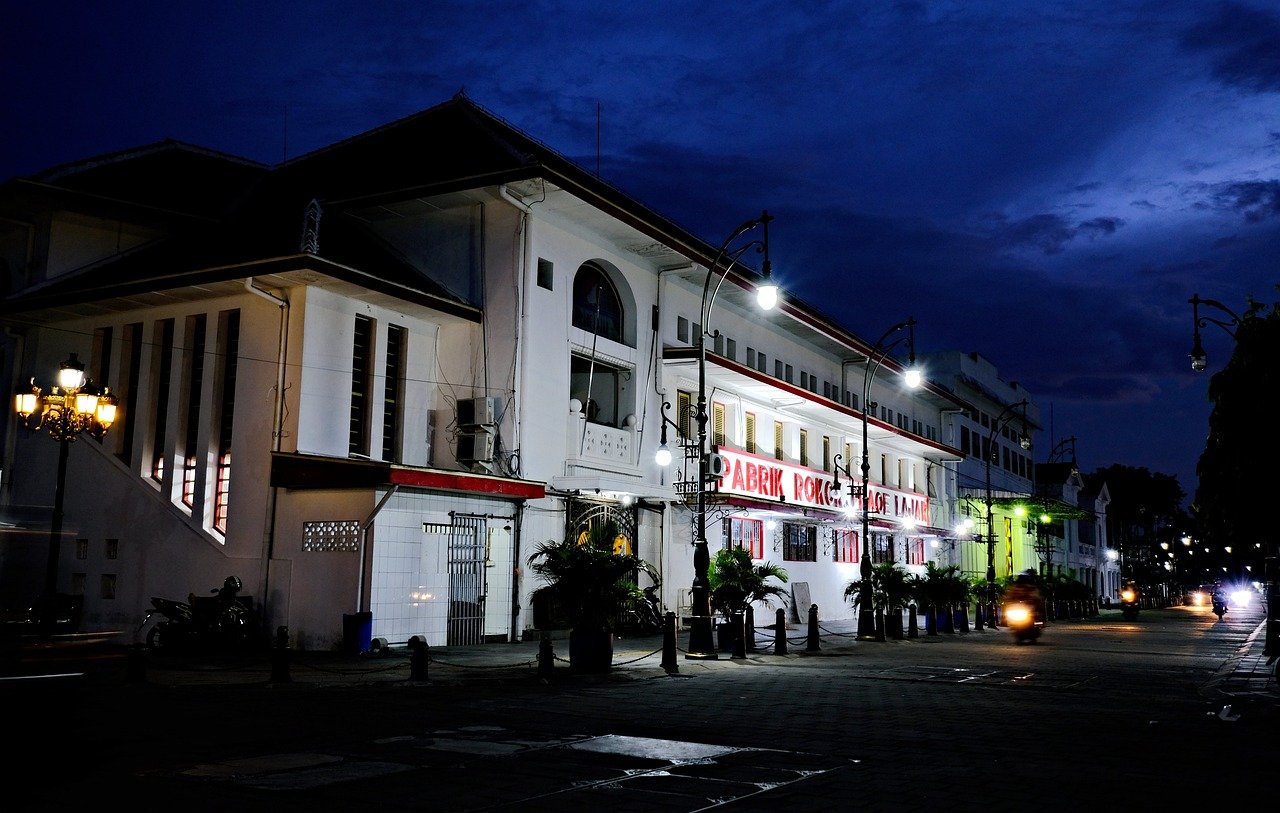How Augmented Reality is Transforming Tourism
In a world where technology is constantly evolving, augmented reality (AR) stands out as a game-changer for the tourism industry. Imagine walking through a historic city, your smartphone in hand, and suddenly the past comes alive around you. With AR, this isn’t just a dream; it’s a reality. This innovative technology is reshaping how travelers explore destinations, providing them with interactive experiences that blend the digital and physical worlds seamlessly. From enhancing visitor experiences to improving navigation and offering immersive storytelling, AR is redefining the way we travel.
AR technology enriches tourist experiences by providing interactive elements that engage visitors on a whole new level. Think about it: when you arrive at a famous landmark, wouldn’t it be amazing to point your phone at it and see historical facts, stories, and even animations unfold right before your eyes? This is the magic of AR! By offering real-time information and historical context, AR transforms ordinary sightseeing into an engaging adventure. Travelers can learn about the cultural significance of each site, making their visit not just memorable but also educational.
Navigating unfamiliar cities can be daunting, but with AR navigation apps, tourists can easily find their way around. Imagine walking through a bustling market or a maze-like old town, and instead of getting lost, you have a digital guide right in your pocket! These apps provide directions and points of interest through an intuitive interface on your smartphone, enhancing both convenience and exploration.
AR-enabled maps are a fantastic feature that overlays digital information onto physical spaces. This means that when you look through your device, you can visualize routes and nearby attractions, significantly improving the ease of navigation in complex environments. It’s like having a personal tour guide who knows all the shortcuts!
Another advantage of AR maps is their ability to provide real-time updates. Whether it's traffic conditions, public transport schedules, or local events, these maps keep tourists informed, ensuring they can make the most of their visit. Imagine being able to adjust your plans on the fly based on current happenings around you!
The beauty of AR navigation apps lies in their user-friendly interfaces. They are designed to cater to diverse audiences, ensuring that even those who are less tech-savvy can navigate with confidence. This inclusivity allows everyone, from young adventurers to older travelers, to enjoy a seamless experience.
AR facilitates interactive tours that allow visitors to engage with historical sites and landmarks through immersive storytelling. Instead of passively observing, tourists can actively participate in the narrative, enhancing their understanding and appreciation of cultural heritage. Imagine standing in front of an ancient ruin and, with a simple scan, watching a reenactment of the life that once thrived there. It’s like stepping back in time!
One of the most exciting aspects of AR in tourism is its ability to offer unique storytelling opportunities. Tourists can experience narratives that bring destinations to life, creating memorable and educational encounters. This immersive approach captivates the imagination and leaves a lasting impression.
AR can recreate historical events or figures at specific locations, providing a vivid context that transforms how tourists perceive and interact with their surroundings. Picture this: you’re standing in a historic square, and suddenly, through your device, you see a famous figure from the past addressing a crowd. This vivid portrayal not only informs but also inspires a deeper connection to the history of the place.
By incorporating game-like elements into tours, AR encourages exploration and interaction, making learning about a destination fun and engaging for all ages. For instance, tourists might embark on a treasure hunt, collecting virtual artifacts as they explore. This gamification aspect not only enhances the experience but also fosters a sense of adventure and excitement.
- What is augmented reality in tourism?
Augmented reality in tourism refers to the use of digital information and interactive elements to enhance the travel experience, allowing tourists to engage with their surroundings in innovative ways. - How does AR improve navigation for tourists?
AR improves navigation by providing real-time directions, overlaying digital information onto physical maps, and offering user-friendly interfaces that help travelers find their way easily. - Can AR enhance historical tours?
Yes! AR can recreate historical events and figures at specific locations, providing immersive storytelling that enhances understanding and appreciation of cultural heritage.

Enhancing Visitor Experiences
Imagine stepping into a bustling city, surrounded by rich history and vibrant culture, but feeling overwhelmed by the sheer volume of information and sights to see. This is where Augmented Reality (AR) steps in, transforming the way travelers interact with their surroundings. AR technology enriches tourist experiences by providing interactive elements, historical context, and real-time information, making destinations not just places to visit, but stories waiting to be uncovered.
For instance, when you visit a historic site, AR applications can overlay digital information directly onto the physical world. You can point your smartphone at a centuries-old building and suddenly see a pop-up window with fascinating facts about its history, architectural style, and even anecdotes about the people who once walked its halls. This kind of immersive experience not only enhances your understanding but also makes the visit more memorable. As you walk through ancient ruins, you might find yourself transported back in time, witnessing the site as it once was, thanks to vivid reconstructions displayed on your device.
Additionally, AR can cater to diverse interests and learning styles. Some travelers thrive on visual information, while others prefer auditory learning. With AR, you can choose how you want to absorb information—whether through engaging visuals, informative audio guides, or even interactive quizzes that test your knowledge as you explore. This level of personalization ensures that every visitor can tailor their experience to their preferences, making it more enjoyable and impactful.
Moreover, AR technology fosters a sense of connection among travelers. Imagine joining a guided tour where your guide uses AR to showcase layers of history and culture. As you stroll through the streets, you can see historical figures appear alongside you, narrating their stories and experiences. This kind of storytelling not only captivates the audience but also creates a shared experience that can spark conversations and connections among fellow travelers.
In addition to enhancing individual experiences, AR can also enrich group tours. For example, families visiting a museum can engage with interactive displays that allow children to participate in educational games. These games can transform learning into a fun and engaging activity, keeping younger visitors interested and excited about the exhibits. The potential for AR to bridge generational gaps in learning is immense, making it a valuable tool for family outings.
Furthermore, as tourists explore new destinations, AR can provide real-time recommendations based on their interests and past behaviors. Picture this: you’re wandering through a vibrant market, and your AR app suggests a nearby café famous for its local delicacies, or alerts you to a street performer who will be performing shortly. This level of interactivity not only enhances convenience but also encourages spontaneous exploration, making your travel experience richer and more fulfilling.
In summary, the integration of Augmented Reality into tourism is revolutionizing visitor experiences. By providing interactive, personalized, and immersive storytelling, AR allows travelers to engage with destinations in ways that were previously unimaginable. As we continue to embrace these innovative technologies, the future of tourism promises to be not just about visiting new places but about experiencing them in a profoundly enriching manner.
- What is Augmented Reality? - Augmented Reality (AR) is a technology that overlays digital information, such as images and sounds, onto the real world, enhancing the user’s perception of their environment.
- How does AR improve tourist experiences? - AR improves tourist experiences by providing interactive information, personalized recommendations, and immersive storytelling that helps travelers connect more deeply with their surroundings.
- Are AR apps user-friendly? - Yes, many AR apps are designed with user-friendly interfaces that cater to both tech-savvy individuals and those who may be less experienced with technology.
- Can AR be used in all tourist destinations? - While AR can be implemented in many locations, its effectiveness may vary based on the availability of technology and the type of content that can be enhanced.

Improving Navigation
Navigating through a new city can often feel like trying to find your way out of a maze blindfolded. However, with the advent of Augmented Reality (AR) navigation apps, tourists can now explore unfamiliar territories with ease and confidence. Imagine walking through the bustling streets of Paris, and instead of squinting at a traditional map or fumbling with your smartphone, you simply hold up your device and see the world around you come alive with digital overlays that guide you to your destination. This is the magic of AR in tourism, transforming the way we experience travel.
AR navigation not only enhances convenience but also enriches the exploration experience. With these innovative apps, users can access directions, points of interest, and even historical context about the sites they are visiting—all in real-time. For instance, while strolling through the ancient ruins of Rome, an AR app can provide insights about the Colosseum's history, making the visit not just a sightseeing trip but an educational journey. This blend of technology and storytelling creates a more engaging experience for travelers.
One of the standout features of AR navigation is the use of AR-enabled maps. These maps overlay digital information onto physical spaces, allowing users to visualize routes and nearby attractions seamlessly. Picture this: you’re standing in front of a magnificent cathedral, and as you point your phone at it, an AR interface pops up, highlighting the best photo spots, nearby cafes, and even the history of the building. This interactive experience significantly improves the ease of navigation, especially in complex environments where traditional maps can be overwhelming.
Another remarkable aspect of AR navigation is its ability to provide real-time updates. Imagine being in a city where you can receive instant notifications about traffic conditions, public transport options, or local events happening nearby. This feature ensures that tourists stay informed, allowing them to adjust their plans on the fly and make the most of their visit. For example, if a parade is taking place in the city center, the app can suggest alternate routes to avoid congestion, enhancing the overall travel experience.
AR navigation apps are designed with user-friendly interfaces that cater to a diverse audience. Whether you’re a tech-savvy millennial or someone who’s not particularly comfortable with technology, these apps make navigation a breeze. The intuitive design allows users to interact with the app effortlessly, ensuring that everyone can explore new cities without the fear of getting lost. This inclusivity is crucial in today’s travel landscape, where people of all ages and backgrounds seek to discover new places.
Moreover, AR facilitates interactive tours that allow visitors to engage with historical sites and landmarks through immersive storytelling. Imagine walking through a historic battlefield, and as you hold up your device, you can see a reenactment of the events that took place right before your eyes. This level of engagement not only enhances understanding but also fosters a deeper appreciation for cultural heritage. Tourists are no longer passive observers; they become active participants in the stories of the places they visit.
- What is Augmented Reality (AR)? - AR is a technology that overlays digital information onto the real world, enhancing the user's perception of their environment.
- How does AR improve navigation for tourists? - AR navigation apps provide real-time directions, points of interest, and contextual information, making it easier for tourists to explore new places.
- Are AR navigation apps easy to use? - Yes! Most AR navigation apps are designed with user-friendly interfaces suitable for all ages and tech-savviness levels.
- Can AR provide real-time updates during navigation? - Absolutely! AR navigation can offer live updates on traffic, local events, and public transport options to enhance the travel experience.

AR-Enabled Maps
Imagine stepping into a new city, your excitement bubbling over as you prepare to explore. But wait—where do you go first? This is where come into play, revolutionizing the way we navigate unfamiliar territories. These innovative tools overlay digital information onto the real world, allowing users to visualize their routes and discover nearby attractions with unparalleled ease. It’s like having a personal tour guide right in your pocket!
With AR-enabled maps, the mundane task of navigation transforms into a thrilling adventure. Picture this: you’re walking through a bustling market, and as you hold up your smartphone, the screen lights up with arrows pointing you toward the nearest café or landmark. It’s not just about getting from point A to B; it’s about experiencing the journey. You can see the history and culture of the place unfold before your eyes, making each step an engaging story.
These maps are particularly beneficial in complex environments, such as urban centers or historical sites. They can highlight:
- Popular Attractions: Easily find must-see spots without the hassle of searching endlessly.
- Hidden Gems: Discover off-the-beaten-path locations that you might have otherwise missed.
- Personalized Recommendations: Get suggestions tailored to your interests, ensuring a unique experience.
But the magic doesn’t stop there! AR-enabled maps also come equipped with features that enhance your journey even further. For example, they can provide real-time updates about:
- Traffic Conditions: Avoid congested areas and find the quickest routes.
- Public Transport Options: Know when the next bus or train is arriving, so you can plan accordingly.
- Local Events: Stay in the loop about festivals, concerts, or exhibitions happening nearby.
This level of interactivity not only makes navigation easier but also enriches the overall travel experience. As you explore, you can gather information about the places you visit, enhancing your understanding and appreciation of the local culture. Whether you're a tech enthusiast or a casual traveler, AR-enabled maps cater to everyone, ensuring that all users can navigate with confidence.
In conclusion, AR-enabled maps are more than just navigation tools; they are gateways to exploration. They transform the way we interact with our surroundings, making travel an immersive experience. So, the next time you find yourself in an unfamiliar city, remember that with AR-enabled maps, adventure is just a tap away!
1. What are AR-enabled maps?
AR-enabled maps are interactive navigation tools that overlay digital information onto the real world, helping users visualize their routes and discover nearby attractions.
2. How do AR-enabled maps work?
They use augmented reality technology to display directional arrows, points of interest, and real-time updates on a smartphone screen, enhancing the navigation experience.
3. Are AR-enabled maps easy to use?
Yes! They are designed with user-friendly interfaces, making them accessible for both tech-savvy individuals and those less familiar with technology.
4. Can AR-enabled maps provide real-time information?
Absolutely! They can offer updates on traffic, public transport options, and local events, ensuring you are always informed during your travels.

Real-Time Updates
Imagine wandering through a bustling city, your phone guiding you not just with static maps but with that keep you informed about everything happening around you. This is the magic of augmented reality (AR) navigation apps! These innovative tools don’t just show you where to go; they dynamically adjust to provide live information that can significantly enhance your travel experience.
For instance, as you stroll through a foreign city, an AR app can alert you to nearby attractions, local events, or even traffic conditions that might affect your journey. This means you can make informed decisions on the fly, whether that's opting for a different route to avoid congestion or deciding to stop by a local festival that just popped up on your radar. The ability to receive transforms the way tourists interact with their surroundings, making exploration not just easier but also more spontaneous and exciting.
Moreover, these apps can provide updates on public transport options, including the next bus or train arrival times, which is a game-changer for anyone trying to navigate a new city. You can say goodbye to the days of waiting in uncertainty at a bus stop. Instead, you can plan your itinerary around real-time data, ensuring you maximize your time and enjoyment. It’s like having a local guide in your pocket!
With the integration of AR in navigation, travelers can also receive alerts about popular spots that are currently less crowded, helping them avoid long lines and enhancing their overall experience. Imagine being able to visit a famous museum without the hassle of waiting in a lengthy queue—sounds appealing, right?
To put it simply, AR navigation apps equipped with real-time updates are revolutionizing the tourism experience by:
- Enhancing Convenience: Travelers can easily adapt their plans based on live information.
- Encouraging Exploration: Spontaneous decisions can lead to discovering hidden gems.
- Improving Safety: Real-time alerts can help tourists avoid unsafe areas or situations.
In summary, the use of real-time updates in AR navigation is not just about getting from point A to point B; it’s about enriching the journey with dynamic, contextual information that allows travelers to engage more fully with their surroundings. So, the next time you’re planning a trip, remember that AR technology can turn your smartphone into a powerful ally, transforming your travel experience into something truly extraordinary!

User-Friendly Interfaces
In the rapidly evolving world of augmented reality (AR), user-friendly interfaces play a crucial role in making technology accessible to everyone. Imagine walking through a bustling city, smartphone in hand, and being able to easily navigate through the maze of streets and attractions. This seamless experience is largely thanks to intuitive designs that cater to a diverse audience. Whether you’re a tech enthusiast or someone who barely knows how to send a text, AR navigation apps are designed with you in mind.
One of the standout features of these interfaces is their simplicity. They often employ recognizable icons and straightforward instructions, which means you don’t need a degree in computer science to find your way. For instance, when you point your phone at a landmark, an AR app can overlay information directly onto the screen, displaying facts, opening hours, and even user reviews—all without cluttering the interface. This clarity allows users to focus on what truly matters: enjoying their adventure.
Moreover, many AR applications incorporate gesture controls and voice commands, making it even easier to interact with the digital world. Instead of tapping through endless menus, you can simply swipe your hand or speak a command to get the information you need. This hands-free approach is not only convenient but also enhances safety, allowing users to keep their eyes on their surroundings while still accessing vital information.
Another essential aspect of user-friendly interfaces is their customizability. Many apps allow users to adjust settings based on their preferences. For example, you can select what types of information you want to see—be it historical data, dining options, or local events. This personalization ensures that every user can tailor their experience to fit their interests, making the exploration process more engaging and enjoyable.
To illustrate how user-friendly interfaces can enhance the tourist experience, here’s a brief comparison of two popular AR navigation apps:
| Feature | App A | App B |
|---|---|---|
| Gesture Controls | Yes | No |
| Voice Commands | Yes | Limited |
| Customizable Information | Extensive | Basic |
| User Ratings | 4.8/5 | 4.2/5 |
As you can see, a user-friendly interface not only enhances the overall experience but also encourages more people to embrace AR technology. With the right tools, anyone can become a savvy navigator, transforming the way we explore and interact with the world around us.
- What is augmented reality? Augmented reality is a technology that overlays digital information, such as images and sounds, onto the real world, enhancing the user's perception of their environment.
- How does AR improve tourism? AR enhances tourism by providing interactive experiences, improving navigation, and offering immersive storytelling that brings destinations to life.
- Are AR navigation apps easy to use? Yes, most AR navigation apps are designed with user-friendly interfaces that cater to both tech-savvy individuals and those less familiar with technology.
- Can anyone use AR technology? Absolutely! AR technology is designed to be accessible, making it suitable for a wide range of users, regardless of their technical expertise.

Interactive Tours
Imagine stepping into a world where history whispers secrets, and every corner you turn reveals a new story waiting to unfold. powered by augmented reality (AR) are doing just that—transforming the way we explore and experience historical sites and landmarks. These tours are not just about walking through a museum or gazing at an ancient building; they are immersive experiences that engage our senses and stimulate our curiosity. With AR technology, visitors can interact with their surroundings like never before, making every visit a personal adventure.
Through the magic of AR, tourists can use their smartphones or AR glasses to see digital overlays that enhance their understanding of a location. For example, as you stand in front of a centuries-old castle, your device might display animations of knights in armor or historical figures discussing events that shaped the region. This dynamic storytelling creates a bridge between the past and the present, allowing visitors to connect with history on a deeper level. It's like having a personal guide that brings the past to life right before your eyes!
Moreover, interactive tours often include challenges and quizzes that encourage visitors to engage actively with the content. Imagine walking through a historic battlefield and receiving prompts to answer questions about the events that took place there. Not only does this gamification make learning fun, but it also fosters a sense of achievement as participants unlock new content or earn rewards for their knowledge. This approach appeals to all ages, making it a fantastic way for families to explore together while learning and having fun.
One of the most exciting aspects of interactive tours is their ability to cater to diverse interests. Whether you're a history buff, an art lover, or just someone looking to have a good time, AR interactive tours can be tailored to suit your preferences. For instance, a tour of an art gallery might allow you to focus on specific artists or styles, while a historical site might offer various narratives depending on your interests. This customization ensures that every visitor leaves with a unique experience that resonates with them personally.
As AR technology continues to evolve, the possibilities for interactive tours are virtually limitless. From virtual reality (VR) elements that transport you to different time periods to location-based games that encourage exploration, the future of tourism is bright. The integration of AR into travel experiences not only enhances enjoyment but also fosters a deeper appreciation for cultural heritage. In a world where travel can sometimes feel rushed and superficial, interactive tours invite us to slow down, engage, and truly experience the richness of our surroundings.
- What is augmented reality in tourism?
Augmented reality (AR) in tourism refers to the use of digital overlays and interactive elements that enhance the visitor experience at various destinations, making them more engaging and informative. - How do interactive tours work?
Interactive tours utilize AR technology to provide users with digital content that complements their physical surroundings, allowing for immersive storytelling and engagement with historical sites. - Can anyone participate in AR tours?
Yes! AR tours are designed to be user-friendly and cater to a wide range of audiences, ensuring that everyone, regardless of tech experience, can enjoy and benefit from them. - Are AR tours available worldwide?
While AR tours are becoming increasingly popular, availability varies by location. Many major tourist destinations are beginning to implement AR technology, but it's best to check specific sites for offerings.

Immersive Storytelling
Imagine walking through a bustling city, the sounds of life surrounding you, when suddenly your smartphone buzzes to life. You lift it up, and a historical figure appears right before your eyes, recounting tales of the past as if they were standing beside you. This is the magic of augmented reality (AR), and it’s revolutionizing how we experience storytelling in tourism. AR offers unique opportunities for tourists to engage with narratives that bring destinations to life, creating memorable and educational encounters.
With AR, the stories of a place are no longer confined to dusty books or guided tours. Instead, they leap off the pages and into the real world, allowing visitors to immerse themselves in the history and culture of the locations they explore. For instance, at a historical site, tourists can use AR apps to see reconstructions of ancient structures or events that once took place there. This dynamic interaction not only captivates the imagination but also enhances understanding and appreciation of cultural heritage.
One of the standout features of AR storytelling is its ability to recreate historical events or figures at specific locations. Picture this: you’re standing at the site of a famous battle, and with a simple scan of your device, you can witness a 3D reenactment of the event. This vivid context transforms how tourists perceive their surroundings, allowing them to step into the shoes of those who lived there centuries ago. It’s like traveling back in time without leaving the present!
Moreover, AR can gamify the experience, making learning about a destination fun and engaging for all ages. By incorporating game-like elements into tours, visitors are encouraged to explore and interact with their environment. For example, an AR app might challenge users to find specific landmarks or complete tasks that reveal hidden stories about the area. This not only makes the experience more enjoyable but also fosters a deeper connection with the place.
To illustrate the impact of AR on storytelling in tourism, consider the following table that highlights some key benefits:
| Benefit | Description |
|---|---|
| Enhanced Engagement | AR captures attention and encourages active participation, making stories more memorable. |
| Personalized Experiences | Tourists can tailor their journey, choosing which stories to explore based on their interests. |
| Educational Value | AR provides context and information that enriches the learning experience, appealing to all ages. |
In conclusion, augmented reality is not just a technological fad; it’s a powerful tool that transforms how we tell stories in tourism. By bridging the gap between the past and present, AR creates immersive experiences that resonate with visitors long after their journey is over. So next time you plan a trip, consider how AR can enhance your adventure and bring the stories of the places you visit to life!
- What is augmented reality?
Augmented reality (AR) is a technology that overlays digital information, such as images and sounds, onto the real world, enhancing the way we perceive our environment. - How does AR enhance tourism?
AR enhances tourism by providing interactive experiences, improving navigation, and offering immersive storytelling that engages visitors in a unique way. - Are AR experiences available for all ages?
Yes! AR experiences are designed to be user-friendly and cater to a wide range of audiences, making them suitable for all ages. - Can I use AR without a smartphone?
Most AR experiences require a smartphone or tablet, but some locations may offer AR glasses or other devices for visitors to use.

Historical Reconstructions
Imagine standing in the very spot where a significant historical event unfolded, yet instead of just a plaque or a monument, you are surrounded by a vibrant, interactive scene that brings the past to life. This is the magic of augmented reality (AR) in historical reconstructions. By overlaying digital images, sounds, and animations onto the real world, AR allows tourists to witness pivotal moments as if they were actually there. For instance, visiting the ruins of an ancient castle can transform from a simple sightseeing trip into a thrilling adventure where you can see knights jousting and hear the sounds of a bustling medieval marketplace.
These reconstructions can provide context that is often missing from traditional tours. When you walk through a historical site, you might appreciate its beauty, but with AR, you can gain a deeper understanding of its significance. Imagine being able to see how a city looked hundreds of years ago, complete with its original architecture and the people who lived there. This immersive experience not only enhances your visit but also fosters a greater appreciation for history.
Furthermore, AR can cater to various learning styles, making it an excellent tool for education. Some people are visual learners, while others may benefit from auditory information or hands-on experiences. With AR, tourists can choose how they engage with the content. For example, while exploring a historic battlefield, you could listen to a narrated account of the events, watch a reenactment, or even participate in a simulation that allows you to take on the role of a soldier. This multifaceted approach to learning makes history more accessible and enjoyable for everyone.
In addition to enhancing the educational aspect, AR historical reconstructions can also create a sense of connection to the past. When you see a famous figure, like a revolutionary leader or a beloved artist, rendered in lifelike detail, it can feel as though you are meeting them face-to-face. This personal connection can spark a deeper interest in history and culture, encouraging travelers to explore further and engage with the stories behind the places they visit.
To illustrate the impact of AR in historical reconstructions, consider the following table that highlights some notable examples:
| Location | Historical Event | AR Experience |
|---|---|---|
| The Colosseum, Rome | Gladiatorial Games | View live-action reenactments of battles and hear the roar of the crowd. |
| Plymouth Rock, Massachusetts | The Arrival of the Pilgrims | Interact with animated Pilgrims sharing their journey and struggles. |
| The Great Wall of China | Construction of the Wall | Experience the wall being built, complete with workers and tools of the era. |
As AR technology continues to evolve, we can expect even more innovative applications in the realm of historical reconstructions. The potential to create immersive, educational experiences is virtually limitless. So, the next time you plan a trip, consider seeking out destinations that offer AR experiences. You might just find that history isn’t just something to read about; it’s something you can truly experience and feel.
- What is augmented reality? Augmented reality is a technology that overlays digital information—such as images, sounds, and animations—onto the real world, enhancing the user's perception of their environment.
- How does AR enhance historical tours? AR enhances historical tours by providing immersive experiences that recreate historical events, allowing tourists to engage with the past in a dynamic and interactive way.
- Are AR experiences suitable for all ages? Yes, AR experiences are designed to cater to diverse audiences, making history accessible and engaging for people of all ages.
- Do I need special equipment to use AR in tourism? Most AR experiences can be accessed through smartphones or tablets, making it easy for travelers to engage with the technology without needing specialized equipment.

Gamification of Experiences
Imagine walking through a vibrant city, your smartphone in hand, and suddenly, the world around you transforms into an interactive playground. This is the magic of gamification in tourism, where augmented reality (AR) turns ordinary sightseeing into an exhilarating adventure. By blending game-like elements with real-world exploration, AR creates a captivating experience that encourages tourists to engage with their surroundings in a whole new way.
So, how does this work? Picture this: as you approach a historical landmark, your AR app prompts you to embark on a treasure hunt. You might need to solve riddles or complete challenges that lead you to hidden gems within the city. Not only does this make your journey more exciting, but it also fosters a deeper connection with the culture and history of the place you're visiting. It's like being part of a live-action video game, where every corner you turn reveals new quests and discoveries.
Furthermore, gamification appeals to all ages, making it an inclusive way to explore. Families can work together to complete challenges, while solo travelers can enjoy the thrill of competition by racing against time or other players. This interactive approach not only enhances the fun but also promotes learning through engagement. When tourists are actively participating rather than passively observing, they are more likely to retain information and appreciate the significance of what they’re experiencing.
To illustrate the impact of gamification in tourism, let’s look at a few key elements:
| Gamification Element | Description | Benefits |
|---|---|---|
| Challenges | Tasks that tourists must complete to earn rewards. | Encourages engagement and exploration. |
| Leaderboards | A ranking system that tracks participants’ progress. | Fosters a sense of competition and achievement. |
| Rewards | Incentives such as discounts or badges for completing tasks. | Motivates continued participation and loyalty. |
In essence, gamification transforms the way we view travel. Instead of just ticking off a list of attractions, tourists are invited to become part of the narrative, actively contributing to their own adventure. This not only makes the experience more memorable but also enriches their understanding of the destination.
As we look to the future, the potential for gamified AR experiences in tourism is limitless. Imagine augmented reality apps that adapt to individual preferences, offering personalized quests based on interests or previous activities. The possibilities are as vast as the landscapes we explore. So, the next time you plan a trip, consider embracing the gamification trend – it might just turn your journey into an unforgettable quest!
- What is gamification in tourism? Gamification in tourism involves integrating game-like elements into travel experiences to make them more engaging and interactive.
- How does augmented reality enhance gamified experiences? AR enhances gamified experiences by overlaying digital information onto the real world, allowing tourists to interact with their environment in innovative ways.
- Can gamification be enjoyed by all ages? Absolutely! Gamification is designed to appeal to a wide range of audiences, making it fun for families, solo travelers, and groups alike.
- What are some examples of gamification in tourism? Examples include treasure hunts, interactive challenges at historical sites, and apps that offer rewards for completing specific tasks.
Frequently Asked Questions
- What is augmented reality in tourism?
Augmented reality (AR) in tourism refers to the integration of digital information with the real world, enhancing the experience of travelers by providing interactive elements, historical context, and real-time information about destinations.
- How does AR enhance visitor experiences?
AR enhances visitor experiences by making destinations more engaging and informative. It allows tourists to interact with their surroundings, offering insights and stories that deepen their understanding and appreciation of the places they visit.
- Can AR help with navigation in unfamiliar places?
Absolutely! AR navigation apps provide tourists with easy-to-follow directions and information about nearby attractions, making it simpler to explore new cities without the stress of getting lost.
- What are AR-enabled maps?
AR-enabled maps overlay digital information onto the physical environment. This technology helps users visualize routes and points of interest, significantly improving navigation in complex areas.
- Are there real-time updates available through AR?
Yes! Many AR navigation apps offer real-time updates on traffic conditions, public transport options, and local events, ensuring that tourists have the latest information to enhance their travel experience.
- How do interactive tours work with AR?
Interactive tours using AR allow visitors to engage with historical sites and landmarks through storytelling, making the experience immersive and educational. This technology brings history to life, helping tourists connect more deeply with cultural heritage.
- What is immersive storytelling in AR?
Immersive storytelling in AR provides unique narratives that enhance the travel experience. By blending digital content with real-world locations, tourists can experience stories that create memorable encounters.
- Can AR recreate historical events?
Yes! AR technology can recreate historical events or figures at specific locations, offering a vivid context that transforms how tourists perceive and interact with their surroundings.
- How does gamification work in AR experiences?
Gamification in AR incorporates game-like elements into tours, encouraging exploration and interaction. This approach makes learning about a destination fun and engaging for visitors of all ages.


















